Behind the Levees
Francis Cape
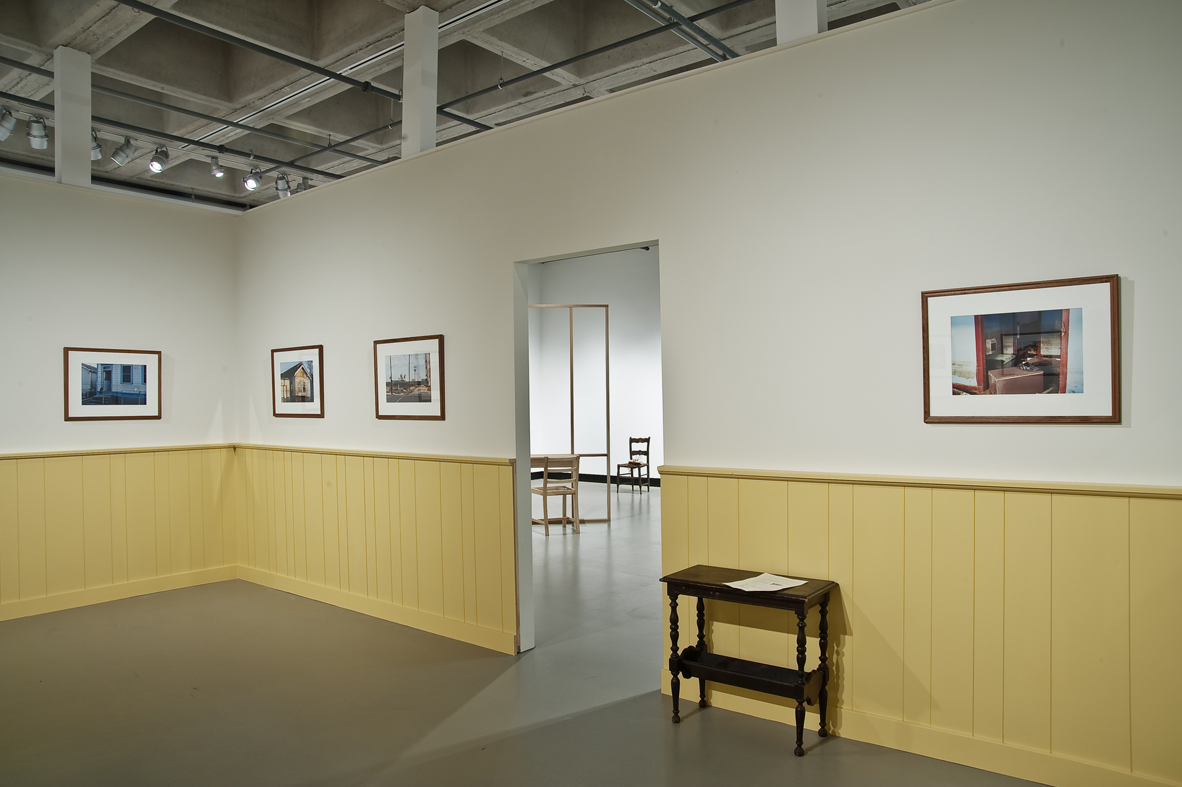
Waterline. 2006. Seventeen Framed C-Prints, Wood, Paint.
Photograph by Warren Wheeler.
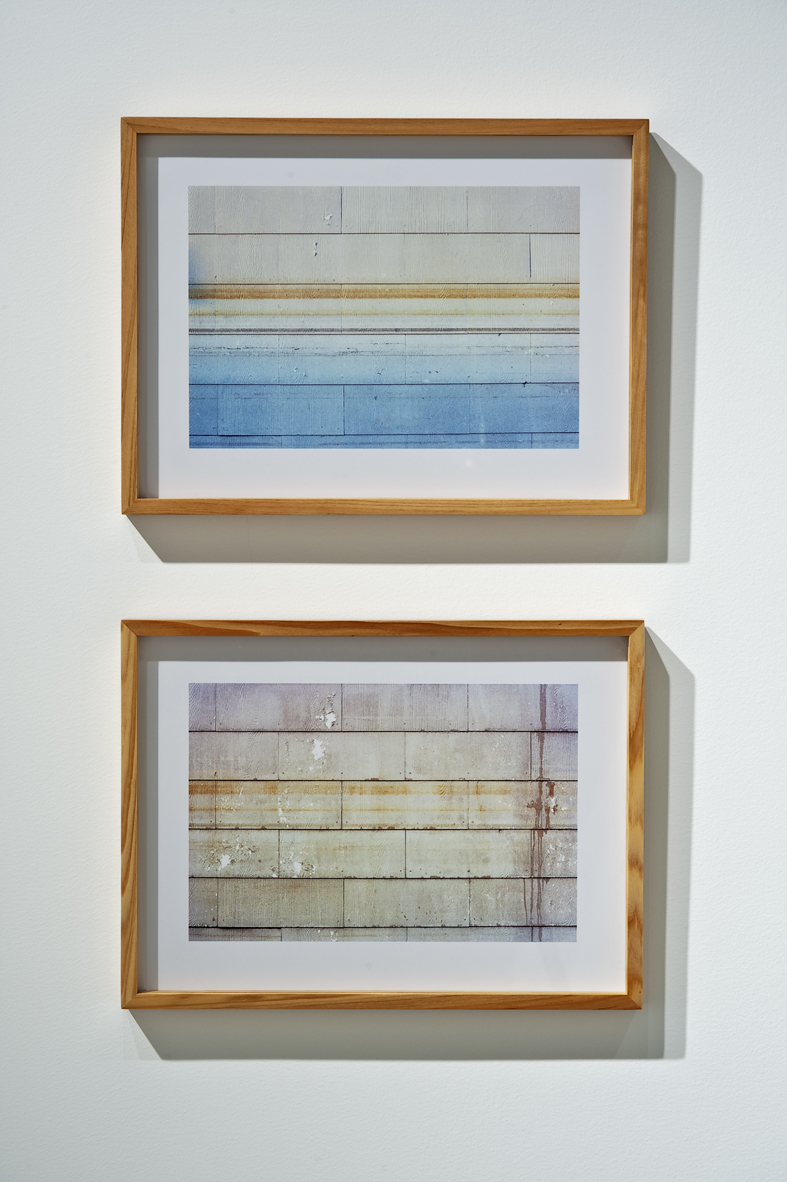
2005-2007. Framed C-Prints. Photograph by Warren Wheeler.
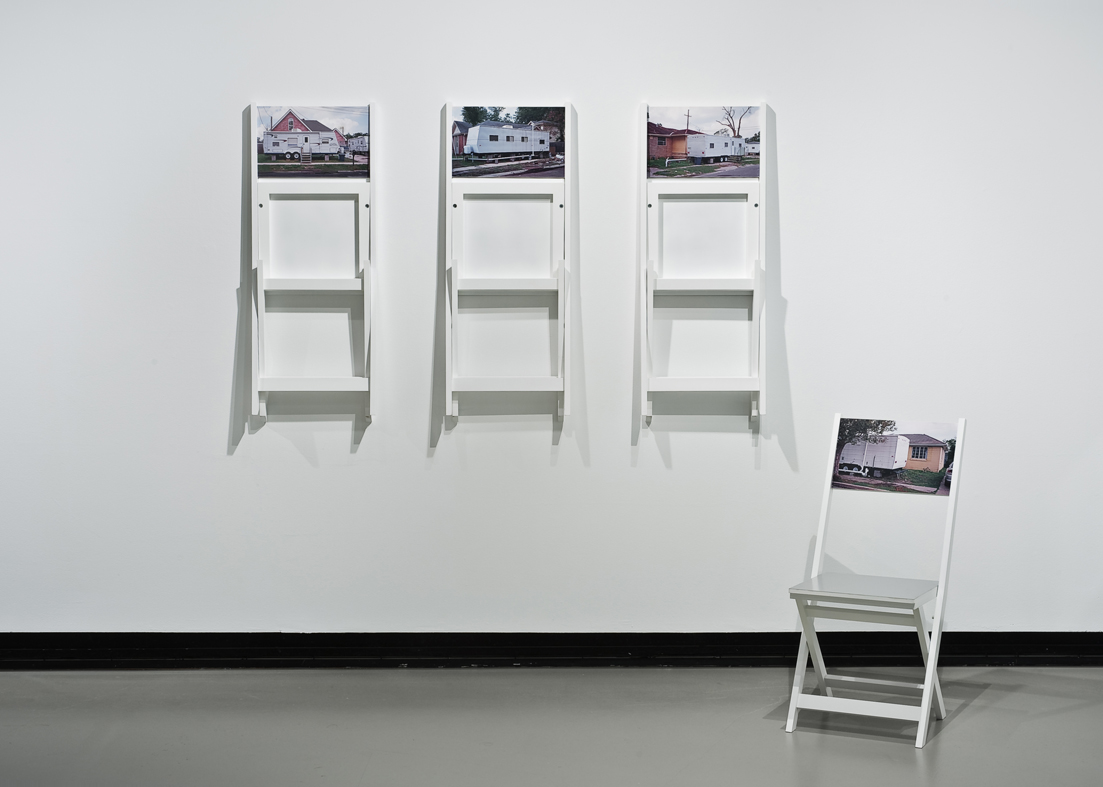
Four Folding Chairs. 2006. Archival Inkjet Prints, Wood, Paint.
Photograph by Warren Wheeler.
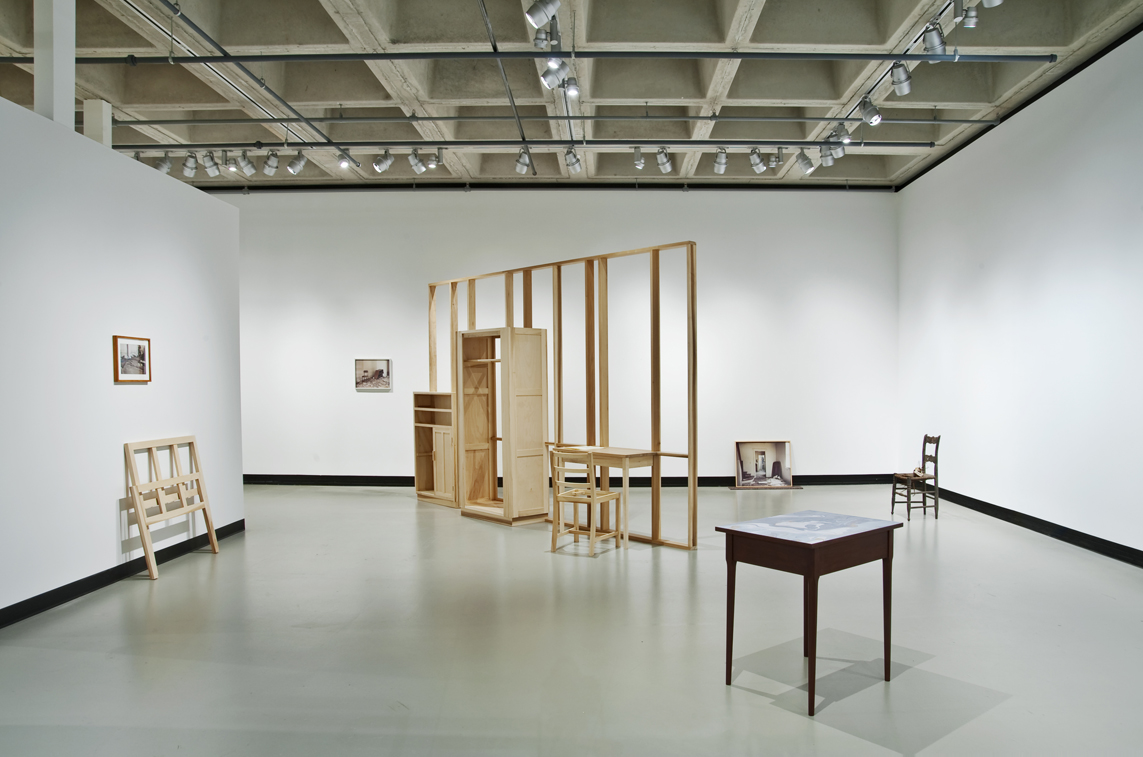
London Avenue. 2008. Poplar, Text. Photograph by Warren Wheeler.
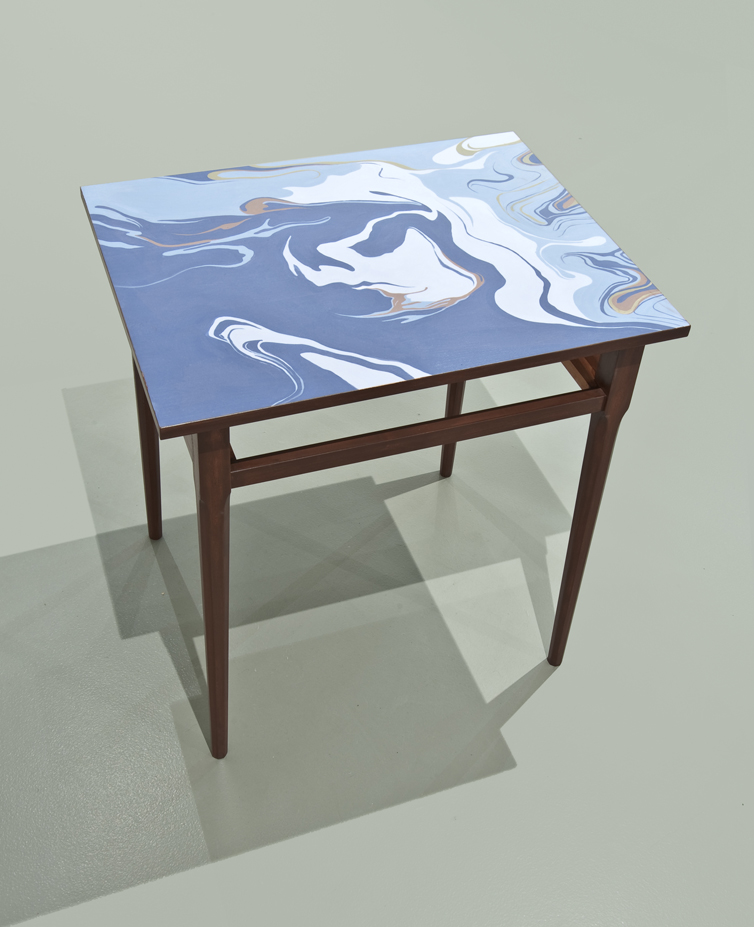
Oil Table. 2010. Wood, Paint. Photograph by Warren Wheeler.
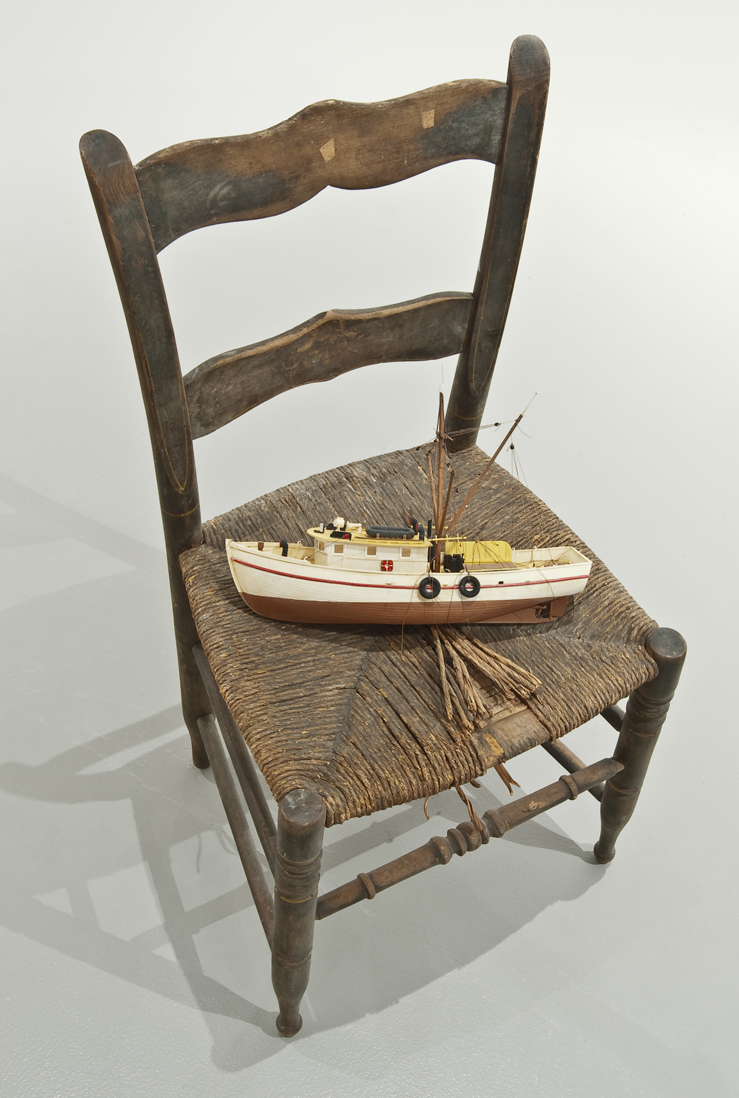
103 Days.... 2010. Wood, Paint, Found Wooden Chair. Photograph by Warren Wheeler.
Artist's Statement
Waterline
Waterline is an installation of framed photographs hung in a level line above a wainscot of painted paneling. The photographs were taken on a 2 1/2 hour walk through Gentilly and St. Roch in Central New Orleans on November 6, 2005, two months after Katrina. I had gone to New Orleans to work at the Louisiana State Museum. One of their buildings had a damaged roof, and we went to help move the contents to temporary storage in Baton Rouge. My walk took me through areas that had been flooded, and were still unoccupied. This was not, however, the dramatic Lower Ninth Ward of media coverage. Gentilly is a middle class neighborhood of ordinary homes. It could be anywhere in America. That it was so ordinary made it more awful. I saw two or three families clearing their homes; a few cars passed. The silence was eery. My idea for making an exhibition that focused on the waterline developed during the walk. It seemed necessary to bring this experience out. It felt as if it could be my own neighborhood; but it was also like walking through a post-apocalyptic sci-fi movie set . I wanted to photograph the ordinariness and the silence. The waterline would act as a sign rather than a description of what had happened. More obvious in some photographs than others, its presence accumulates during the viewing. The same is true for the army’s paint markings listing date and body count. The paneling of the wainscot is that pressed “random board” sheet paneling so common throughout the US in the last quarter of the twentieth century. Often subsequently painted over, it appears as such in one of the photographs, and unpainted in another. My aim in using the wainscot is to establish a strong horizontal line using an architectural element that will also, I hope, work against the distancing effect of an exhibition space. The photographs are in ordinary household frames bought from a local store. I ate sometimes in a restaurant that had watercolors of the French Quarter hung over a wainscot.
Four Folding Chairs
The photographs were taken in New Orleans in June 2006 following the same route I had walked for Waterline in November 2005. They show FEMA trailers set up in front yards. Most people living in the trailers were waiting on renovating their homes until they saw how the levees were fixed. Furniture is moveable architecture. Folding chairs, like trailers, are for camping and temporary use. They're about as much use to people in a flood zone as a trailer.
London Avenue
This 8ft x 13 ft wall size is common in the wall facing you in a Gentilly/St Roche house - taller in the older houses. After the flooding the first thing people did was to throw out the funriture; the second was to tear off the wall board. In 2008 many houses still stand open with exposed studs. This wall size is also that of the back wall of many exhibition rooms in the Festival of Britain of 1951, an exhibition whose purpose of boosting the morale and the economy of the nation after a disaster parallels that of Prospect 1 for New Orleans. My research into that festival led to the Utility Furniture Scheme, which, by comparison, makes a pointed commentary on the actions of government today as particularly exemplified in New Orleans (see text on table, shown in image far right). The Utility Furniture Scheme is also, I believe, the last historical example of the link between design and social idealism that started with William Morris and ran through the Bauhaus, de Stijl and Scandinavian design.
Writer Monika Burczyk's Statement
Oil Table
Cape’s new work references the British Petroleum
Gulf oil spill with explicit connections to post-Katrina New Orleans and an implicit global
consciousness. In Oil Table, an oil slick spreads across and covers the entire surface of
the table. The 1835 side table, from St. Landry Parish in Louisiana, is a perfect reproduction, refined and elegant; the painting on its top forces us to consider limits, edges and
boundaries: geographic, economic, ethical, moral.
103 Days...
In 103 Days... the toy model shrimp boat is beached and deserted on a chair the artist bought for a dollar, a cast-away sorely in need of repair and renewal. The complicated aftershocks of the disaster are presented, and conflicts on individual, community, regional, national and global levels meet: the personal is the political and vice versa.
* All images taken from the exhibition Behind the Levees, held in 2010 at The Clifford Gallery at Colgate University in Hamilton, New York, with sponsorship from the Art and Art History Department and the Institute for Creative and Performing Arts at Colgate University.





